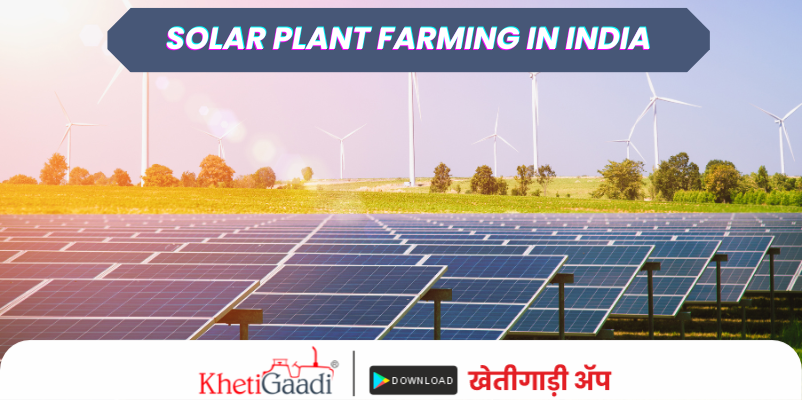The Versatility of JCB: Revolutionizing Construction with Innovative Machinery
In construction and agriculture, JCB has emerged as a leading name, synonymous with quality and innovation. Renowned for its versatile machinery, JCB offers a wide range of equipment that caters to various industries. One of the critical aspects that draw customers to JCB is the competitive JCB price, which balances cost-effectiveness with high performance. This article delves into the history, features, and applications of JCB machinery, highlighting its pivotal role in shaping the construction industry. Additionally, we will touch on the unique offerings from other notable brands like Powertrac and Polaris, which complement the versatile nature of JCB.
A Legacy of Innovation
JCB, short for Joseph Cyril Bamford Excavators Ltd., was founded in 1945 by Joseph Cyril Bamford in the United Kingdom. Over the decades, the company has evolved from a small agricultural equipment manufacturer to a global leader in construction machinery. JCB's commitment to innovation is evident in its diverse product lineup, which includes backhoe loaders, excavators, telescopic handlers, and more. The company's dedication to quality and durability has made JCB a preferred choice for contractors and builders worldwide.
Key Features and Technology
One of the standout features of JCB machinery is its robust design and advanced technology. JCB machines are engineered to perform in the most challenging environments, offering reliability and efficiency. The company's proprietary EcoMax engines are a testament to this, providing high power output while maintaining fuel efficiency. These engines are designed to meet stringent emissions standards, making JCB machinery environmentally friendly.
The ergonomic design of JCB machines ensures operator comfort and safety. Features like the Smooth Ride System (SRS) and advanced hydraulic systems enhance the machine's performance, allowing for smoother and more precise operations. The JCB LiveLink telematics system is another significant innovation, enabling real-time monitoring of machine health, location, and performance. This technology not only improves operational efficiency but also helps in preventive maintenance, reducing downtime and operational costs.
Applications and Versatility
JCB machinery's versatility makes it suitable for various applications, from construction and agriculture to waste management and landscaping. The company's backhoe loaders, for instance, are a staple on construction sites due to their multi-functionality. These machines can dig, lift, and load materials, making them invaluable for a wide range of tasks. Similarly, JCB's excavators and skid steer loaders are essential for excavation, demolition, and material handling.
In agriculture, JCB's telehandlers and compact tractors offer excellent utility. These machines are designed to handle a variety of tasks, from lifting heavy loads to mowing and plowing. The JCB Fastrac, a high-speed tractor, is particularly notable for its speed and versatility, making it ideal for both agricultural and transport applications.
Comparison with Powertrac and Polaris
While JCB stands out for its construction and agricultural machinery, other brands like Powertrac and Polaris also offer unique offerings. Powertrac, known for its efficient and affordable tractors, provides a range of models suitable for small to medium-sized farms. Their tractors are designed to offer excellent fuel efficiency and low maintenance costs, making them a popular choice among farmers.
Polaris, on the other hand, is renowned for its all-terrain vehicles (ATVs) and utility task vehicles (UTVs). These vehicles are designed for off-road applications, making them perfect for rugged terrains. Polaris UTVs, such as the Ranger and RZR series, are widely used in agriculture, forestry, and outdoor recreation. They offer exceptional versatility, allowing users to tackle various tasks, from transporting goods to navigating challenging landscapes.
Conclusion
JCB has firmly established itself as a leader in the construction and agricultural machinery sectors, thanks to its innovative technology and robust design. The competitive JCB price, coupled with the brand's reputation for quality, makes it a preferred choice for professionals worldwide. While brands like Powertrac and Polaris offer their own unique advantages, JCB's comprehensive range of machinery and commitment to excellence set it apart. As industries continue to evolve, JCB remains at the forefront, providing the tools needed to tackle the challenges of tomorrow.
https://khetigaadi.com/jcb-price-backhoe-loaders/en
JCB Price, Powertrac, Polaris
The Versatility of JCB: Revolutionizing Construction with Innovative Machinery
In construction and agriculture, JCB has emerged as a leading name, synonymous with quality and innovation. Renowned for its versatile machinery, JCB offers a wide range of equipment that caters to various industries. One of the critical aspects that draw customers to JCB is the competitive JCB price, which balances cost-effectiveness with high performance. This article delves into the history, features, and applications of JCB machinery, highlighting its pivotal role in shaping the construction industry. Additionally, we will touch on the unique offerings from other notable brands like Powertrac and Polaris, which complement the versatile nature of JCB.
A Legacy of Innovation
JCB, short for Joseph Cyril Bamford Excavators Ltd., was founded in 1945 by Joseph Cyril Bamford in the United Kingdom. Over the decades, the company has evolved from a small agricultural equipment manufacturer to a global leader in construction machinery. JCB's commitment to innovation is evident in its diverse product lineup, which includes backhoe loaders, excavators, telescopic handlers, and more. The company's dedication to quality and durability has made JCB a preferred choice for contractors and builders worldwide.
Key Features and Technology
One of the standout features of JCB machinery is its robust design and advanced technology. JCB machines are engineered to perform in the most challenging environments, offering reliability and efficiency. The company's proprietary EcoMax engines are a testament to this, providing high power output while maintaining fuel efficiency. These engines are designed to meet stringent emissions standards, making JCB machinery environmentally friendly.
The ergonomic design of JCB machines ensures operator comfort and safety. Features like the Smooth Ride System (SRS) and advanced hydraulic systems enhance the machine's performance, allowing for smoother and more precise operations. The JCB LiveLink telematics system is another significant innovation, enabling real-time monitoring of machine health, location, and performance. This technology not only improves operational efficiency but also helps in preventive maintenance, reducing downtime and operational costs.
Applications and Versatility
JCB machinery's versatility makes it suitable for various applications, from construction and agriculture to waste management and landscaping. The company's backhoe loaders, for instance, are a staple on construction sites due to their multi-functionality. These machines can dig, lift, and load materials, making them invaluable for a wide range of tasks. Similarly, JCB's excavators and skid steer loaders are essential for excavation, demolition, and material handling.
In agriculture, JCB's telehandlers and compact tractors offer excellent utility. These machines are designed to handle a variety of tasks, from lifting heavy loads to mowing and plowing. The JCB Fastrac, a high-speed tractor, is particularly notable for its speed and versatility, making it ideal for both agricultural and transport applications.
Comparison with Powertrac and Polaris
While JCB stands out for its construction and agricultural machinery, other brands like Powertrac and Polaris also offer unique offerings. Powertrac, known for its efficient and affordable tractors, provides a range of models suitable for small to medium-sized farms. Their tractors are designed to offer excellent fuel efficiency and low maintenance costs, making them a popular choice among farmers.
Polaris, on the other hand, is renowned for its all-terrain vehicles (ATVs) and utility task vehicles (UTVs). These vehicles are designed for off-road applications, making them perfect for rugged terrains. Polaris UTVs, such as the Ranger and RZR series, are widely used in agriculture, forestry, and outdoor recreation. They offer exceptional versatility, allowing users to tackle various tasks, from transporting goods to navigating challenging landscapes.
Conclusion
JCB has firmly established itself as a leader in the construction and agricultural machinery sectors, thanks to its innovative technology and robust design. The competitive JCB price, coupled with the brand's reputation for quality, makes it a preferred choice for professionals worldwide. While brands like Powertrac and Polaris offer their own unique advantages, JCB's comprehensive range of machinery and commitment to excellence set it apart. As industries continue to evolve, JCB remains at the forefront, providing the tools needed to tackle the challenges of tomorrow.
https://khetigaadi.com/jcb-price-backhoe-loaders/en
JCB Price, Powertrac, Polaris






